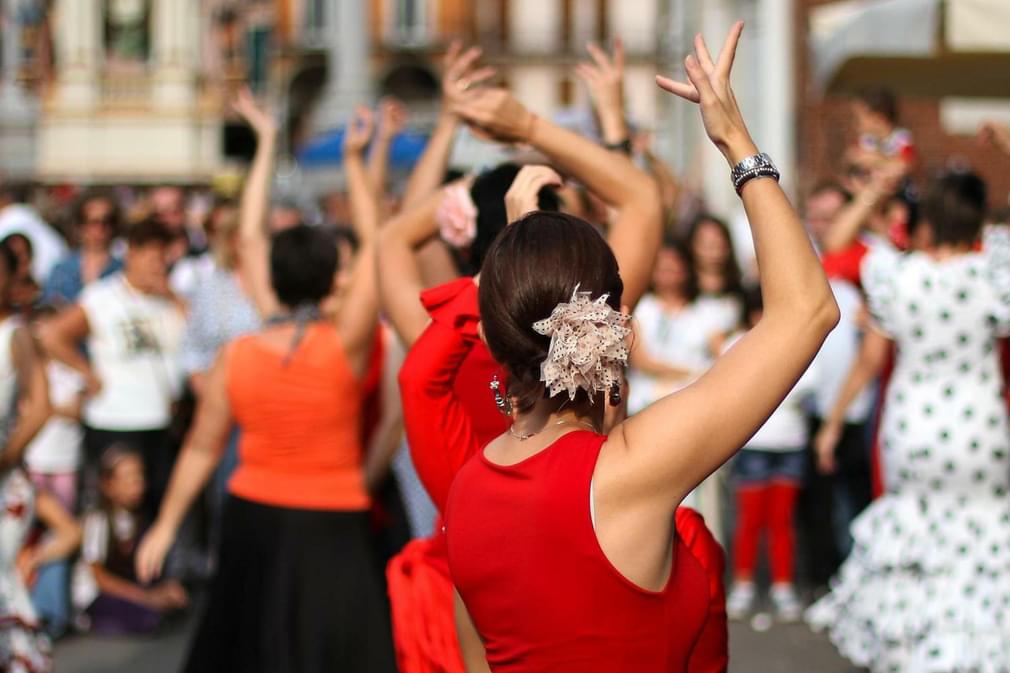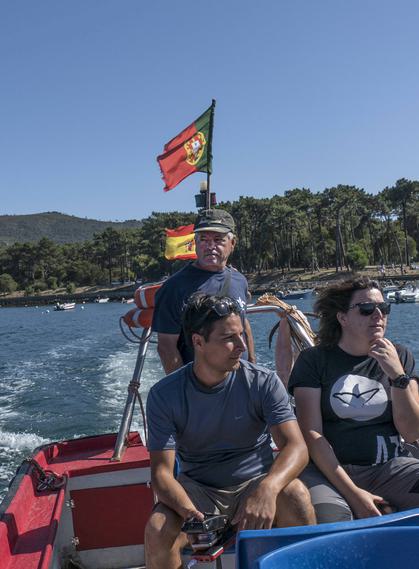What’s the difference between Flamenco and a Sevillana?

People visiting southern Spain often assume that anyone dancing in a colourful polka-dotTraje Gitana is in the throes of flamenco rather than Spain’s most popular folk dance, the Sevillana. To avoid causing offence to Flamenco purists, here is our guide to distinguishing the dances. Although they are closely related there are actually big differences for those in the know.
Origins
The roots of Flamenco are not precisely known, but it is generally accepted that it grew out of the unique interplay of native Andalucían, Islamic, Sephardic, and Gypsy cultures that existed in Andalusia in the late 15th and early 16th centuries.
On the other hand, Sevillanas are believed to have evolved from the Seguidillas, a Castilian dance, from the 15th century. It later mixed with other Spanish dance forms such as Flamenco to become what is, today, the Sevillana.
Performance
Sevillanas are strictly choreographed, usually performed by pairs or groups of people. If you’re doing a solo Sevillana then you’re either doing it wrong or you are engaged in experimental dance routine.
Although Flamenco is occasionally choreographed for couples in specific theatrical works, it is by nature an entirely free-form individual endeavour.
Dancing Rules
Flamenco is an improvised, expressive dance. The rhythm and beat of the guitar and percussion, including the hand-clapping of the audience, influence how the bailaor (Flamenco dancer) moves. The dancing style can differ according to where you are in Andalucía. In Seville the stress is on the arms and how dancers move, In Granada it's much more about the taconeando (heel stomping).
Sevillanas are performed to a set of carefully worked out steps within which there are four dance elements. Each sections consists of a series of coplas (verses), which need to be followed in order:
1- Rhythmic pattern on the guitar.
2- Introduction.
3- Opening pose.
4- First dance variation.
5- Partners switch places.
6- Second dance variation.
7- Partners switch places.
8- Third dance variation.
9- Close.
Musical characteristics
Normally, palmas (hand-clapping) are not associated with Sevillanas, instead, there is a standard rhythmic pattern performed on both the guitar (rasgueados) and castanets (rolls). The music is in 3/4 metre and the lyrics of the songs often describe aspects of daily life in Andalucía.
In Flamenco there are over 50 different musical styles, although the 12-beat metre is perhaps the most common, but as this is a free art, palmas sometimes confuse this. Contrary to what most people think the song is really the heart of Flamenco, generally reflecting the spirit of desperation, struggle, hope, and pride of the people during times of persecution.
Unique features
One of the most mysterious components of Flamenco is what it is called duende, a spiritual state really hard to explain. Duende is said to enter your mind and soul only in certain condition, most likely in an intimate flamenco session, when the singer is possessed by the dark tones of its song.
Because of its social nature, Sevillanas are often the only Spanish folk dance that everyone has in common. Nowadays, it is danced at almost any sort of get-together, whether it be a fair, a wedding, or just at a family get-together.
Our Spain holidays Get in touch
The Pothole is Pura Aventura's popular monthly email. We share what we love, what interests us and what we find challenging. And we don't Photoshop out the bits everyone else does. We like to think our considered opinions provide food for thought, and will sometimes put a smile on your face. They've even been known to make people cry. You can click here to subscribe and, naturally, unsubscribe at any time.
The Pothole is Pura Aventura's popular monthly email. We share what we love, what interests us and what we find challenging. And we don't Photoshop out the bits everyone else does. We like to think our considered opinions provide food for thought, and will sometimes put a smile on your face. They've even been known to make people cry. You can click here to subscribe and, naturally, unsubscribe at any time.








 By
By